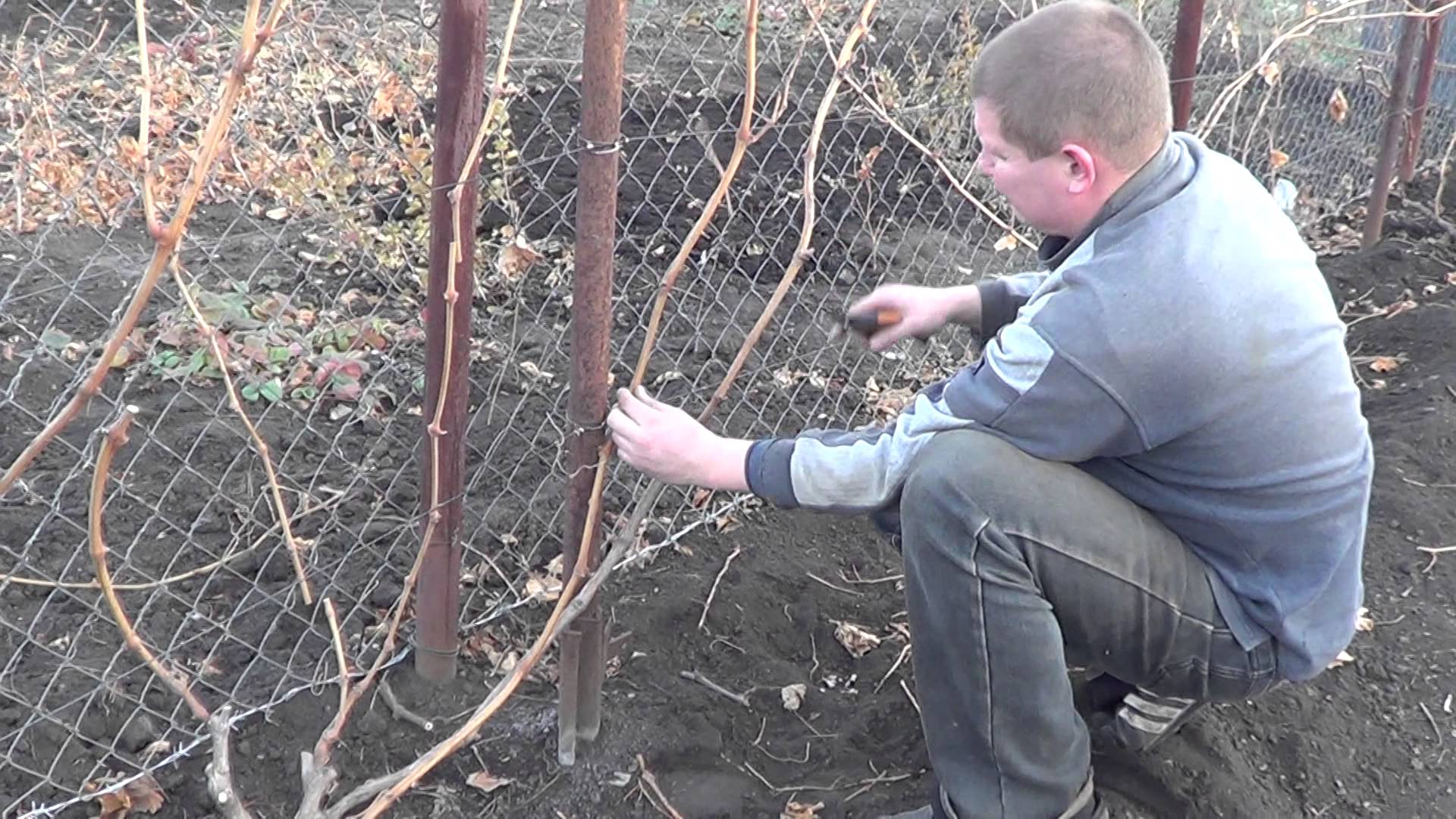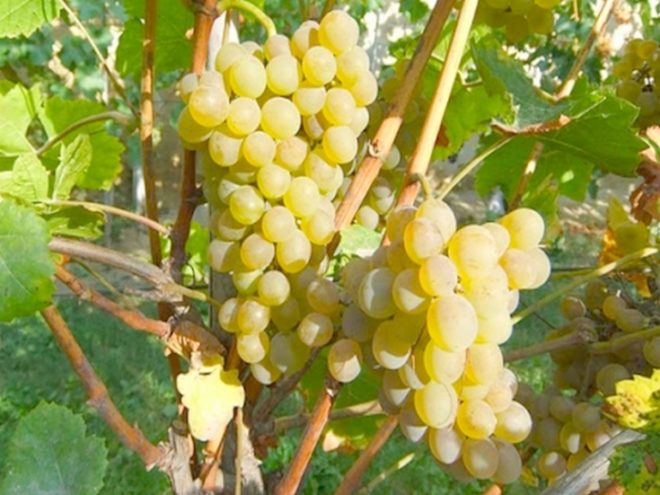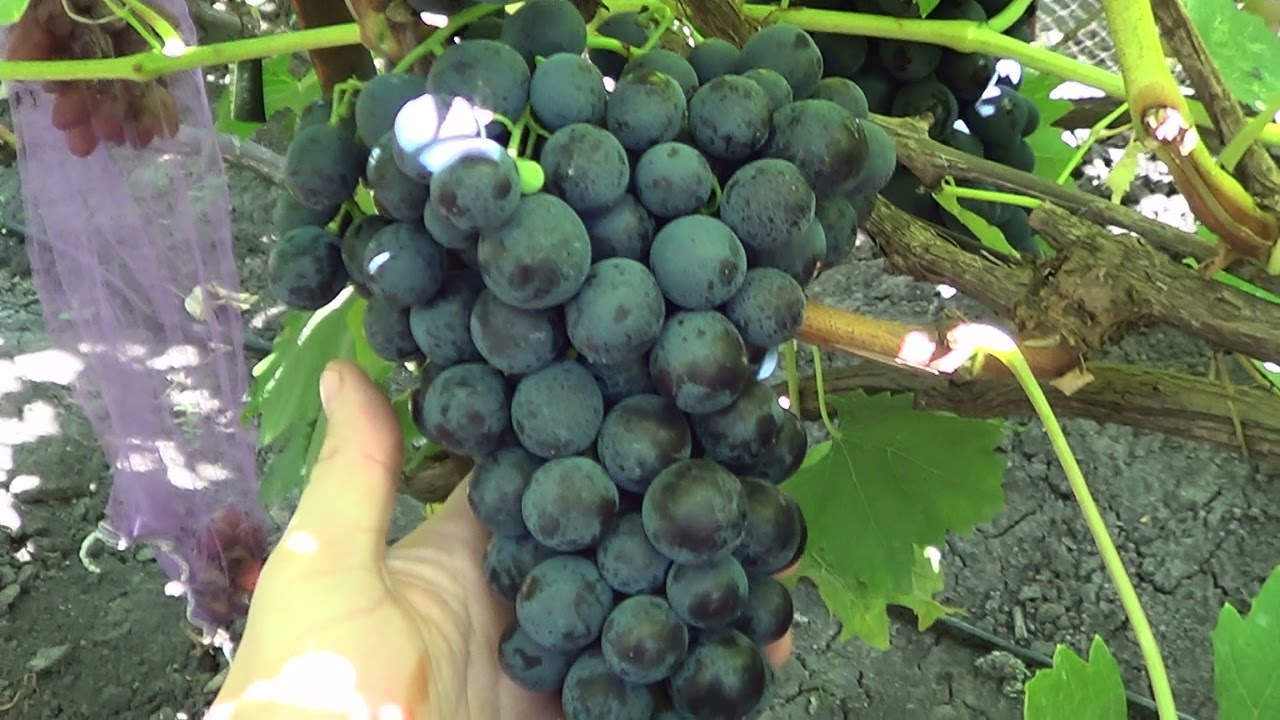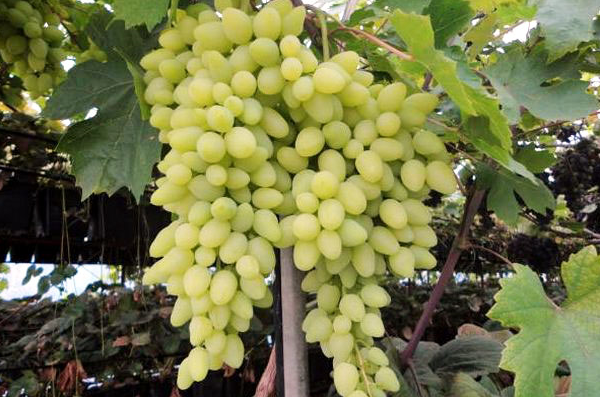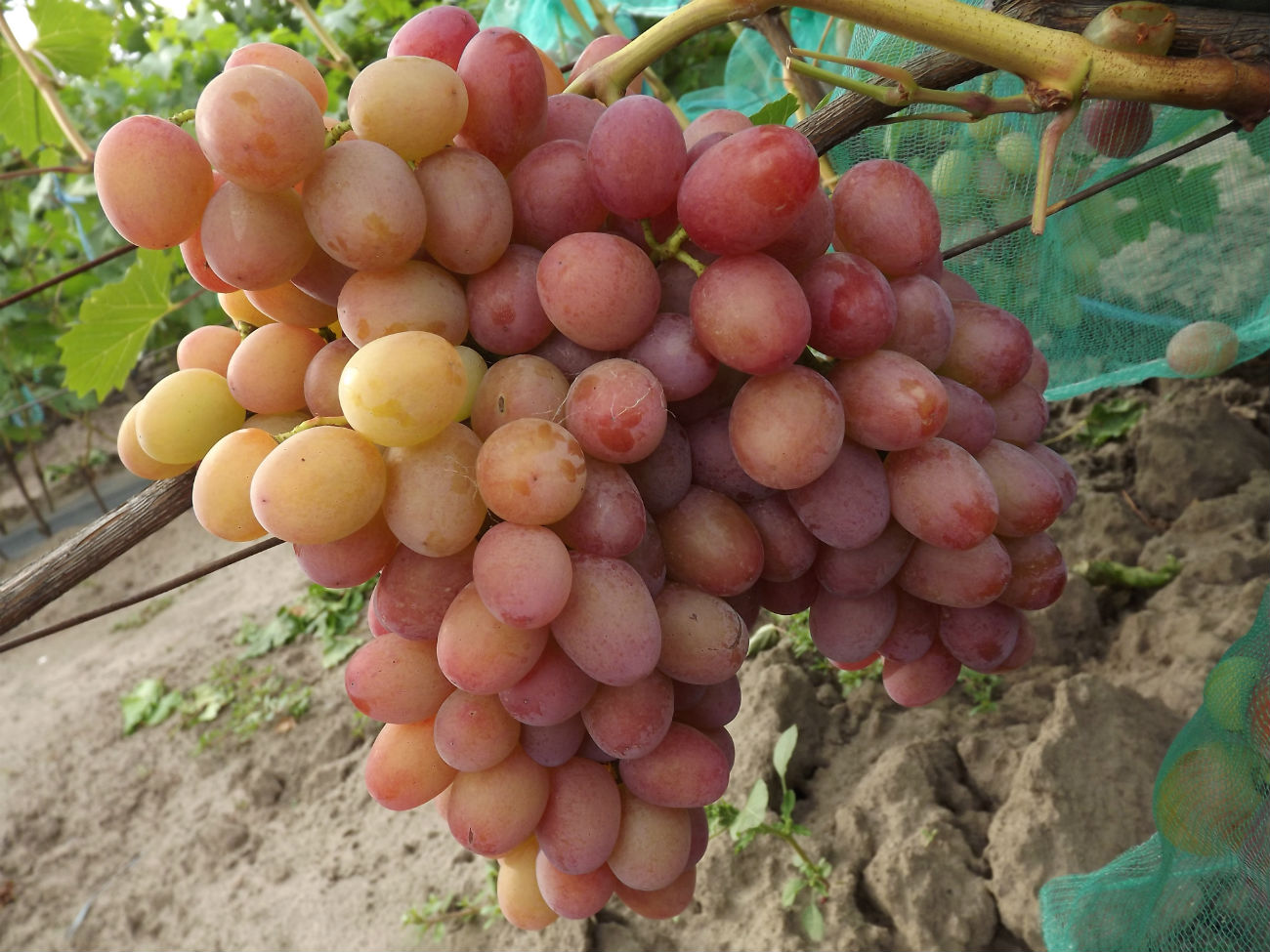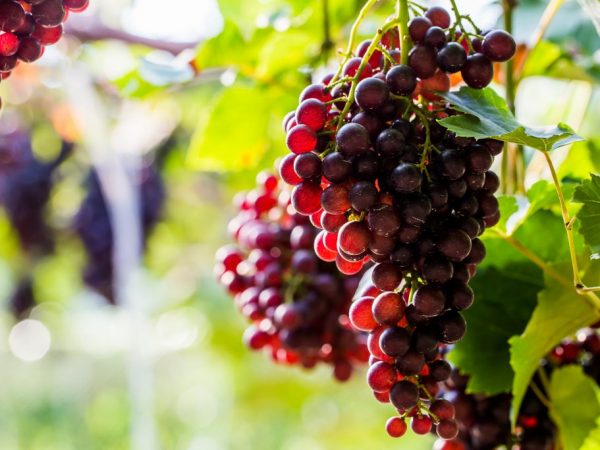Content:
The vast majority of grape varieties are very susceptible to temperature changes. The exception is frost-resistant and non-sheltering varieties. A striking representative of such varieties is the Marinovsky open grape, which is able to withstand temperatures as low as -30 degrees.
Marinovsky was bred by long-term crossing of several varieties. The result is an unpretentious grape that does not need frequent feeding, is not picky about the composition of the soil, loves moisture, but is drought-resistant. The taste is excellent and despite the fact that the berries are small in size, they are stored for a long time and can be transported over long distances. The Marinovsky variety is officially a wine variety, but most of the domestic gardeners grow it for food.
Description and characteristics of the variety
The uncovering varietal grapes Marinovsky appeared as a result of the scientific activities of the breeders of the N.V. Potapenko Ya. I.
When creating a hybrid, several grape varieties, completely opposite in characteristics, were used - July and Amur. Fortunately, Marinovsky inherited excellent frost resistance from his parents. Thanks to this, it is actively grown in the middle and northern lane, including in the Moscow region.
Features of the variety in one table:
| Hybrid purpose | for the production of wine drinks |
|---|---|
| Sugar content | 19 – 20% |
| Acidity of grapes | 4 - 5 g / l |
| Taste qualities | harmonious |
| Frost resistance indicators | withstands temperature drops down to -30 ° С |
| Berry color | from deep dark blue to black |
| Fruit weight | can vary from 4 to 6 g |
| Berry shape | oval |
| Bunch weight | capable of varying from 280g to 0.5kg |
| Bunch shape | cylindrical-conical |
The Marinovsky grape variety is among the hybrids with an average and medium late ripening period (125 - 130 days). The bushes are characterized by rapid growth, which is above average. The shoots are abundantly covered with leaves of a beautiful unusual shape and color.
Large and medium-sized leaves create shade and can keep themselves cool even on hot days. At the edges of the foliage there are dome-shaped denticles, which expand strongly at the base.
Young shoots have an unusual color - red, which makes the grapes also decorative. Often with its help, gazebos, verandas and balconies are covered.
The brushes are conical, large in size. They have excellently developed blades (1-2 pcs.). The average weight of each bunch is 280-300 g, but there are exceptions.
The berries grow very densely in relation to each other. The usual fruit sizes are 14 mm by 12 mm. Taste is simple, but quite harmonious, leaving behind a pleasant aftertaste of nutmeg. The skin is quite dense, inside it is juicy pulp with small bones. The resulting juice comes out uncolored.
The sugar concentration in fruits, regardless of weather conditions and plant care, is 19-21%. Domestic gardeners, most often, grow the Marinovsky grape variety not for making wines, but for fresh consumption and for obtaining juices. But winemakers can easily prepare dry white and rosé table wines of very high quality.
Agrotechnics
The unpretentiousness of the plant makes it much easier to care for it, but does not exclude several standard manipulations. The vineyard is easy to plant in the Moscow region or any other region related to the middle lane.
Planting seedlings
A characteristic feature of all hybrids is propagation by seedlings. It is recommended to purchase planting material in proven nurseries, since their disease resistance indicators are not very high. When buying from dubious sellers, the likelihood of purchasing infected seedlings increases significantly.
Planting is carried out according to the standard scheme, it is recommended to prepare the soil in advance.
- Dig a hole for a grape seedling in the fall, dimensions - 60 by 60 cm. The root system of the plant should be freely located in the trench. The most favorable soil is fertile with medium acidity. With high clay content, the soil must be mixed with sand.
- Organic fertilizers are evenly distributed at the bottom of the pit and covered with a layer of soil on top.
- With the onset of spring, when the soil has warmed up (the air temperature is kept at least + 19 ° C), a culture is planted. As a rule, the best time is the end of April - mid-May.
- The seedling is carefully lowered into the pit, sprinkled with soil, which is lightly tamped.
- After planting, the grower should water the plant abundantly with water.
Vineyard care
In leaving, Marinovsky grapes are unpretentious. It does not need frequent fertilization, abundant watering or excess moisture removal. The necessary components of care are pruning branches and preventive measures against diseases and pests.
Prevention of diseases of this non-covering grape variety. The average indicators of resistance to mildew and gray rot are noted. Also, sometimes you have to deal with powdery mildew (fungal disease).
- One of the most effective methods of combating powdery sulfur is ground sulfur. The substance is used to irrigate the ovaries, vines, leaves and always the soil near the bushes. You can even make bunch baths from colloidal sulfur by dipping them entirely into the solution.
- In the spring, with the onset of warmth, the plant must be sprayed with special fungicides. You can buy them on the market or in any specialized store.
- In autumn, plants are recommended to be treated with a solution of copper or iron sulfate (3-5%).
As for pests, berries are practically not susceptible to attacks by birds and insects due to their harsh skin.
Pruning grapes. The bushes develop and grow very rapidly, their height can reach 2 meters. In addition, the vines are prone to overload.
- In the spring, shoots are cut into 4-6 eyes. If the planned pruning is carried out in the fall, then, in case of frost damage, at least 8 shoots are saved.
- After the formation of the ovary, you must carefully examine the bushes. The excess ovary must be removed, otherwise the harvest will be poor.
- It is recommended to prune young fruiting vines in the summer so that all the nutrients go to the berries.
- Remove dried and damaged leaves and shoots regularly. All collected waste must be collected and burned or put on compost.
An obligatory component of care is the rationing of the number of bunches. This is due to the fact that the Marinovsky variety is capable of overloading with fruits. In viticulture, it is recommended to cut the vine by 3-5 eyes. A characteristic feature of the shoots is good maturity indicators.
Advantages and disadvantages of the variety
The hybrid form has a large number of advantageous features, thanks to which the varietal Marinovsky grapes have enjoyed well-deserved love among winegrowers for many years. Let's consider the main advantages:
- Absolute undemanding care. Even a novice winegrower can grow Marinovsky grapes. To cultivate it, you will need to make a minimum of time, physical and financial costs.
- The vines are characterized by excellent fruiting rates. Moreover, weather conditions do not affect the quantity and quality of the crop.
- The dense peel of the berries allows you to store the brushes for a long time, as well as subject the crop to transportation over long distances.
- Low concentration of sugars in fruits.
As for the shortcomings, their growers do not notice, with the exception of insufficient resistance to certain diseases. In addition, you need to know that only adult Marinovsky grape bushes have excellent indicators of frost resistance. Young seedlings must be covered for the winter.
Marinovsky grape is an unpretentious plant that even a novice agronomist can grow. Excellent individual qualities make it in demand in the domestic market.

